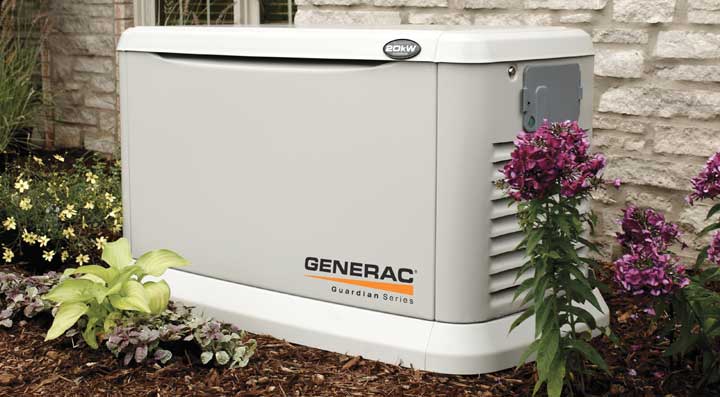
Portable generators are less expensive to purchase and install than permanent (standby) generators. Without a supplemental fuel supply, they have a relatively short run-time and may need to be refueled several times a day during a prolonged power outage.
Most portable generators are designed to work with a few appliances or pieces of electrical equipment that may be plugged directly into the generator without the use of a generator transfer switch.
The above portable generator can be used for small businesses, or in remote locations.
This type of generator be could especially useful for small to mid-sized businesses or in remote locations, but it isn’t recommended if you are operating sensitive equipment or have numerous large appliances or business machines.
It is critical to determine ahead of time what electrical items will be needed during a power outage in order to choose the properly sized generator, and to determine how each item will be connected to the generator.
Referring to the critical business functions identified in your business continuity plan, and the electrical equipment upon which they depend, will help you decide if a portable generator is sufficient.
It is very important not to overload a generator. Generator operating manuals typically provide guidelines on power consumption of appliances such as refrigerators, fans, televisions, window mounted air conditioners, etc. but not large commercial equipment.
A business owner may contact a certified electrician to conduct an electrical load analysis of his building and equipment to determine the power consumption of the entire building and individual electrical equipment.
When using a portable generator, you also will have to purchase an electric power cord to feed the electrical equipment. This should be a heavy duty outdoor-rated extension cord sized for the total electrical load (voltage and amps) you may need.
Choose a cord that exceeds the total expected load in order to prevent excessive heat buildup and degradation of the power cord. An overloaded power cord can potentially start a fire.
Ensure that the cord has three prongs and has no splits, cuts or holes in the external insulation covering.
For businesses with multiple locations it may be too expensive to provide generators at each location, so another option may be a rental or lease agreement to have a generator be delivered prior to or immediately after a storm.
A permanent generator is typically wired into your building’s electrical system through a generator transfer switch.
When these switches sense a power outage they will isolate your “emergency” electrical wiring, providing power to the selected equipment from the normal power source, then start to transfer the “emergency” load to the generator.
When the power is restored, the switch also will connect “emergency” circuits back to the utility lines and turn off the generator.
In addition to the convenience of automatic switching, permanent generators offer higher power levels compared to portable units and longer run times.
A permanent generator should be compatible with the fuels available in your area — most models operate with natural gas, propane, or on a bi-fuel basis.
For more information, contact South Shore Generator in Wareham, MA.
Source: disastersafety.org
Whether your need is to power your business to keep on your production schedule or your home to keep your family safe and sound, South Shore Generator has the product diversity to meet all of your generator requirements. We are proud to sell and service generators from 2kW to 2000kW single set units and up to as large as 100MW utilizing Generac's innovative Modular Power Systems (MPS).